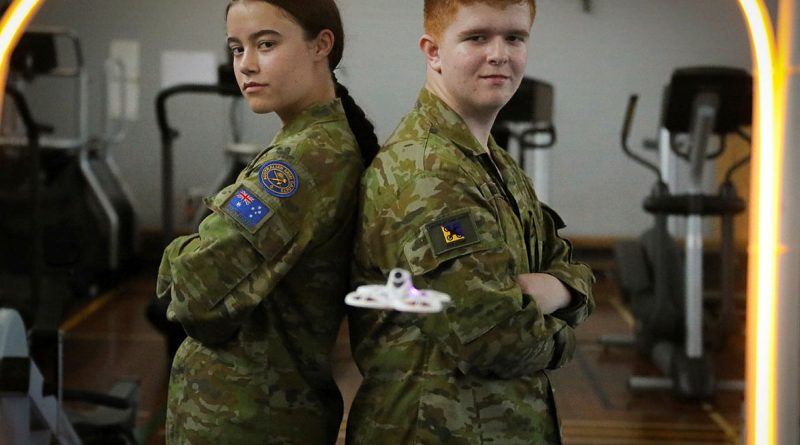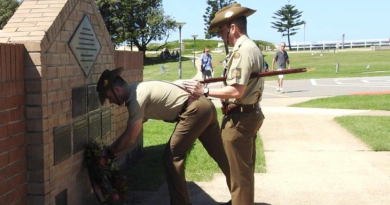Cadets put drone skills to the test

Cadets from across the country learnt how to pilot small drones reaching speeds of up to 200km/h at the Australian Army Cadet camp.
CAPTION: Members of the Australian Army Cadets prepare to race tiny drones during the Army Cadet Drone Racing camp at Gallipoli Barracks, Enoggera, Queensland. Story by Major Carolyn Barnett. Photo by Cadet Sergeant Joshua Parcell.
The cadets were mentored by the Australian Army Drone Racing Team and some of the best drone racers in the country during the week-long camp at Gallipoli Barracks, Brisbane, from January 14-20.
They learned how to build, program and pilot both tiny and five-inch drones during the build phase; building the frame, soldering different components together and finishing off with programming.
Cadet Under Officer (CUO) Bruno Hickey, the National Cadet Training Officer and a drone racing pilot in the Army Cadet racing team, said the progress the cadets made was a credit to them.
“I am noticing that a lot of cadets who have done STEM activities before, either at school or with cadets, are picking up and transferring these skills to drones,” CUO Hickey said.
“The cadets who have pre-existing soldering skills are really taking up the soldering of the micro parts.
“Because the drone electronics are small, the skills for soldering are fine and precise.”
The five-inch drone can fly at speeds of up to 200km/h and is easy to manoeuvre because it has more power behind it, allowing more freedom to navigate obstacles around a racing course.
The three-inch drones pose challenges because they are flown inside and there is more risk of hitting obstacles in the confined space.
After learning how to fly in a simulator, the cadets put their skills to the test and raced the drones.
CAPTION: Army Cadet Corporal Zachary Melvaine learns how to build a five-inch drone during the Army Cadet Drone Racing Camp at Gallipoli Barracks. Photo by Cadet Corporal Adeline Puteli.
Cadet Corporal Zachary Melvaine, from Watsonia, Victoria, took out first place in the tiny drone competition.
He said the months spent practising before coming to the camp had paid off.
“Outside of cadets I’ve had no previous experience with drones,” he said.
“When I first heard about the opportunity I thought it would be a great way to further my STEM skills.
“I practised on a TX-12 radio controller and hooked it up to a simulator and spent the last couple of months practising.”
Drone operator Bombardier Riley Van Leeuwen, of 20th Regiment, Royal Australian Artillery, said the cadets had made great progress in a short period of time.
“Every year it seems like we are getting more passionate cadets,” Bombardier Van Leeuwen said.
“It is always great to see how quickly everyone picks up the new skills.”
CAPTION: Members of the Australian Army Cadet Racing Team prepare to race tiny drones after being mentored by some of the best drone racers in Australia. Photo by Cadet Corporal Adeline Puteli.
.
.

.
.







